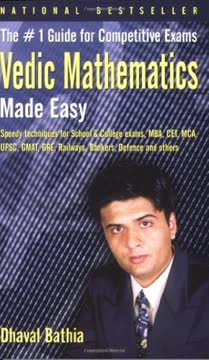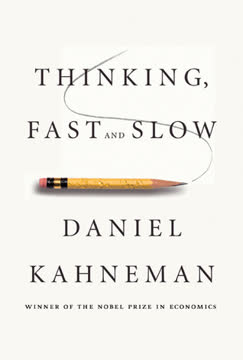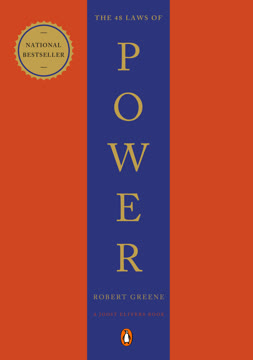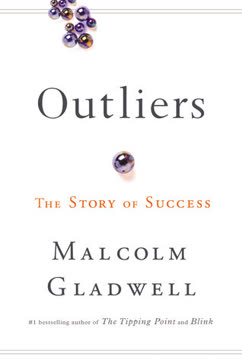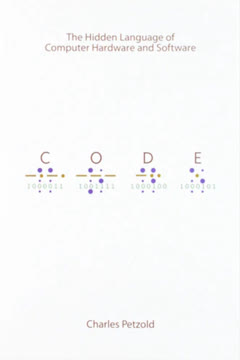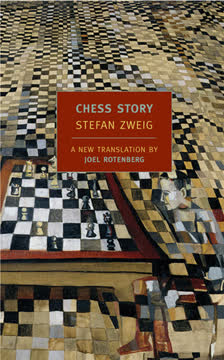Key Takeaways
1. Vedic Mathematics: Ancient Techniques for Modern Problem-Solving
Vedic Mathematics is the collective name given to a set of sixteen mathematical formulae discovered by Jagadguru Swami Sri Bharati Krishna Tirthaji Maharaj.
Origins and applicability. Vedic Mathematics, despite its name, is not directly mentioned in the Vedas. It was rediscovered through intuitive revelation by Swami Bharati Krishna Tirthaji in the early 20th century. These techniques can be applied to various branches of mathematics, from arithmetic to calculus, offering simpler and faster methods for complex calculations.
Practical benefits. The system provides methods to solve mathematical problems with fewer steps and sometimes without any intermediate steps at all. This makes it particularly useful for students preparing for competitive exams, where speed and accuracy are crucial. The techniques are designed to be simple enough for people with average mathematical knowledge to understand and apply effectively.
2. The Power of Criss-Cross Multiplication
The Criss-Cross system of multiplication helps us get our answer in just one line!
Technique overview. The Criss-Cross system, also known as the Urdhva-Tiryak Sutra, is a universal multiplication method applicable to numbers of any length. It involves a systematic pattern of cross-multiplication and addition, allowing for rapid calculation without the need for traditional long multiplication steps.
Application and advantages. This method is particularly effective for:
- Multiplying two-digit, three-digit, and higher-digit numbers
- Reducing the time taken for complex multiplications
- Minimizing errors in calculation
- Enabling mental multiplication for larger numbers
The system's efficiency lies in its ability to provide partial products quickly, allowing for faster identification of correct answers in multiple-choice questions.
3. Mastering Square Roots and Cube Roots
You might find it difficult to believe, but at the end of this study, you will be calculating cube roots of complicated numbers like 262144, 12167 and 117649 in 2-3 seconds.
Cube root technique. The Vedic method for finding cube roots involves a simple pattern recognition:
- The last digit of the cube root corresponds to the last digit of the cube in a specific pattern
- The method divides the number into groups of three digits from right to left
- It uses a key of perfect cubes from 1 to 10 for quick reference
Square root method. For square roots, the technique involves:
- Grouping digits in pairs from right to left
- Using a similar pattern recognition for the last digit
- Employing a step-by-step process for larger numbers
Both methods significantly reduce calculation time compared to traditional long division methods, making them invaluable for quick mental calculations and competitive exams.
4. The Base Method: A Revolutionary Approach to Calculations
The Base Method of multiplication is a wonderful contribution of Vedic Mathematics.
Concept and application. The Base Method, or Nikhilam Navatascaramam Dasatah, uses powers of 10 (like 10, 100, 1000) as bases for calculations. It's particularly effective for:
- Multiplying numbers close to these bases
- Squaring numbers
- Performing quick mental calculations
Technique overview:
- Choose a suitable base close to the given numbers
- Calculate the difference between the numbers and the base
- Multiply these differences for the right-hand side of the answer
- Add or subtract the differences cross-wise for the left-hand side
This method dramatically reduces calculation time for certain types of numbers, especially those close to powers of 10.
5. Digit-Sum Method: Quick Answer Verification
The digit-sum method can only tell us whether an answer is wrong or not. It cannot tell us with complete accuracy whether an answer is correct or not.
Technique explanation. The Digit-Sum Method involves:
- Reducing any number to a single digit by repeatedly adding its digits
- Applying this to multiplicands, multipliers, and products
- Verifying if the digit-sum of the product matches the digit-sum of the multiplicands multiplied together
Applications and limitations. This method is useful for:
- Quickly checking the plausibility of multiplication results
- Eliminating obviously wrong answers in multiple-choice questions
- Verifying results in addition, subtraction, and division
However, it's important to note that while this method can definitively identify incorrect answers, it cannot guarantee the correctness of an answer, as different numbers can have the same digit-sum.
6. Magic Squares: Mathematical Patterns and Predictions
A college student who is just nine-years of age formed a magic square with 21 rows and 21 columns within ten minutes!
Concept and construction. Magic squares are grids filled with consecutive integers where the sum of each row, column, and diagonal is the same. The Vedic method provides a systematic approach to creating these squares:
- Start with the number 1 in the center of the last column
- Move diagonally up-right, wrapping around when reaching edges
- Use specific rules for filling squares when blocked
Properties and applications. Magic squares have interesting properties:
- The central number is always the average of the first and last numbers
- The sum of any row, column, or diagonal can be calculated from the central number
- They have applications in recreational mathematics and some areas of applied mathematics
Understanding the construction of magic squares develops pattern recognition and logical thinking skills.
7. Calendars and Date Calculations Made Easy
After studying this technique, you shall be able to predict the day on which any day falls from 1st January 1901 to 31st December 2000.
Technique overview. The Vedic method for calendar calculations involves:
- Memorizing a key for the first Sunday of each month
- Using a simple calculation involving the year, month, and date
- Applying specific rules for leap years
Practical applications. This method allows for quick mental calculation of:
- The day of the week for any date in a given year
- Prediction of future dates and days
- Solving calendar-related puzzles and questions in competitive exams
The technique can be expanded to cover different centuries with slight modifications, making it a versatile tool for historical and future date calculations.
8. Advanced Algebraic Techniques in Vedic Mathematics
Vedic Mathematics provides a very simple alternative.
Solving linear equations. Vedic Mathematics offers simplified methods for solving:
- Single variable equations: Using a formula based on the coefficients
- Simultaneous linear equations: Employing cross-multiplication techniques
Benefits and applications. These methods:
- Reduce the number of steps in solving equations
- Eliminate the need for complex algebraic manipulations
- Are particularly useful in solving word problems quickly
The techniques provide a more intuitive approach to algebra, making it easier for students to grasp and apply in various mathematical and real-world scenarios.
9. Cubing Numbers: Anurupya Sutra Simplified
The Anurupya Sutra is based on the formulae that we just studied.
Technique explanation. The Anurupya Sutra for cubing numbers involves:
- Breaking down the number into two parts (a and b)
- Using a geometric progression to generate terms
- Applying a specific pattern of multiplication and addition
Method steps:
- Identify 'a' and 'b' in the number to be cubed
- Generate four terms using the ratio b/a or a/b
- Double the middle terms to create a second row
- Add all terms with appropriate zeros
This method provides a faster alternative to traditional cubing, especially useful for mental calculations and quick estimations.
10. Efficient Division Methods in Vedic Mathematics
The obvious question that arises is how to solve a problem of division where the divisor includes numbers like 1, 2, 3, etc.
Two main techniques:
-
Base Method of Division:
- Useful for divisors close to powers of 10
- Involves working with the difference between the divisor and the nearest base
-
Paravartya Method:
- Applicable to a wider range of divisors
- Uses a negative difference and a transposition technique
Advantages and applications. These methods:
- Reduce the number of steps in long division
- Allow for quicker mental calculations
- Are particularly useful in solving complex division problems in competitive exams
Both techniques demonstrate the versatility of Vedic Mathematics in providing alternative approaches to standard arithmetic operations, often leading to faster and more intuitive solutions.
Last updated:
FAQ
What is "Vedic Mathematics Made Easy" by Dhaval Bathia about?
- Comprehensive Guide to Vedic Mathematics: The book introduces and explains the ancient Indian system of Vedic Mathematics, focusing on its sixteen sutras (formulas) for rapid mental calculation.
- Step-by-Step Techniques: It provides detailed, easy-to-follow methods for arithmetic, algebra, geometry, and more, making complex calculations simpler and faster.
- Practical Application: The book is structured to help students, especially those preparing for competitive exams, to solve mathematical problems efficiently.
- Accessible to All Levels: Content is divided into Basic, Intermediate, and Advanced sections, ensuring that both beginners and advanced learners can benefit.
Why should I read "Vedic Mathematics Made Easy" by Dhaval Bathia?
- Boosts Calculation Speed: The book teaches techniques that significantly reduce the time needed for mathematical calculations, which is invaluable for exams and daily life.
- Improves Mathematical Confidence: By demystifying math and making it enjoyable, the book helps readers overcome math anxiety and develop a positive attitude toward the subject.
- Applicable to Competitive Exams: Many methods are tailored for quick problem-solving in exams like MBA-CAT, GMAT, UPSC, and more.
- Self-Learning Friendly: Written in a conversational style with plenty of examples and exercises, it allows readers to learn independently without external help.
What are the key takeaways from "Vedic Mathematics Made Easy" by Dhaval Bathia?
- Vedic Sutras Simplify Math: The sixteen Vedic sutras can be applied to a wide range of mathematical problems, making calculations faster and more intuitive.
- General vs. Specific Techniques: The book distinguishes between universal methods (like the Criss-Cross system) and specific shortcuts for certain number patterns.
- Practice and Application: Each chapter ends with graded exercises, enabling readers to practice and master the techniques.
- Beyond Arithmetic: The book covers not just arithmetic but also algebra, geometry, magic squares, calendar calculations, and more.
How does Dhaval Bathia explain the origins and philosophy of Vedic Mathematics in "Vedic Mathematics Made Easy"?
- Historical Background: The book credits Jagadguru Swami Sri Bharati Krishna Tirthaji Maharaj as the founder of Vedic Mathematics, who discovered the sutras through deep meditation.
- Controversy and Clarification: Bathia addresses the debate about whether these techniques are directly from the Vedas, clarifying that while not explicitly in the Vedas, the term "Vedic" refers to the all-encompassing knowledge tradition.
- Intuitive Discovery: The sutras were reconstructed from scattered references and intuitive insights, not empirical research.
- Philosophical Approach: The book emphasizes that Vedic Mathematics is about enjoying and understanding math, not just rote calculation.
What are the most important Vedic Mathematics techniques covered in "Vedic Mathematics Made Easy" by Dhaval Bathia?
- Criss-Cross System (Urdhva-Tiryak Sutra): A universal multiplication method that works for numbers of any size, allowing single-line answers.
- Base Method (Nikhilam Sutra): Multiplication and division techniques using numbers close to powers of ten, greatly simplifying calculations.
- Yavadunam Rule: A shortcut for squaring numbers near a base, both above and below.
- Digit-Sum Method: A quick way to check the correctness of answers without full recalculation.
- Special Shortcuts: Techniques for squaring numbers ending in 5, multiplying by series of 9’s or 1’s, and more.
How does "Vedic Mathematics Made Easy" by Dhaval Bathia help with competitive exams and school studies?
- Time-Saving Methods: The book’s techniques are designed to solve problems in seconds, crucial for time-pressured exams.
- Covers Exam-Relevant Topics: Includes chapters on cube roots, square roots, magic squares, and calendar dates, all of which appear in competitive exams.
- Practice-Oriented: Exercises are graded by difficulty, helping students build confidence and proficiency.
- Smart Work Over Hard Work: Emphasizes efficient problem-solving strategies rather than lengthy traditional methods.
How does "Vedic Mathematics Made Easy" by Dhaval Bathia make math more enjoyable and accessible?
- Conversational Style: The author writes as if speaking directly to the reader, making complex ideas approachable.
- Visual Aids and Diagrams: The book uses diagrams and step-by-step illustrations to clarify concepts.
- Mental Magic Tricks: Early chapters include fun math tricks (like predicting dates of birth or pocket money) to spark interest and break math anxiety.
- No Prior Expertise Needed: Explanations start from the basics, ensuring even those who dislike or fear math can follow along.
What are the differences between general and specific techniques in "Vedic Mathematics Made Easy" by Dhaval Bathia?
- General Techniques: Methods like the Criss-Cross system apply to any numbers, regardless of their pattern or size, making them universally useful.
- Specific Techniques: Shortcuts that work only for certain types of numbers, such as squaring numbers ending in 5 or multiplying numbers whose last digits add to 10.
- Emphasis on General Methods: The book prioritizes general techniques for their broader applicability, but also teaches specific ones for special cases.
- Strategic Application: Readers learn when to use each type of technique for maximum efficiency.
How does "Vedic Mathematics Made Easy" by Dhaval Bathia teach advanced topics like square roots, cube roots, and algebra?
- Square and Cube Roots: Provides unique Vedic methods for extracting roots of perfect and imperfect squares/cubes quickly, often without written steps.
- Algebraic Equations: Introduces Vedic approaches to solving linear and simultaneous equations, often reducing multi-step problems to single-line solutions.
- Higher Powers and Geometry: Appendices cover raising numbers to higher powers and applying Vedic methods to coordinate geometry.
- Stepwise Examples: Each advanced topic is broken down with clear, worked-out examples and practice problems.
What are some unique or lesser-known topics included in "Vedic Mathematics Made Easy" by Dhaval Bathia?
- Magic Squares: Step-by-step construction of magic squares, including their properties and applications in numerology and puzzles.
- Calendar Calculations: Techniques to determine the day of the week for any date in a given century, including Zeller’s Rule for any year.
- Pythagorean Triplets: Methods to generate Pythagorean triples for geometry problems.
- Divisibility Tests and Mental Checks: Quick rules for checking divisibility and verifying answers mentally.
What are the best quotes from "Vedic Mathematics Made Easy" by Dhaval Bathia and what do they mean?
- “Education is a process to be enjoyed and cherished.” – Emphasizes that learning, especially math, should be a joyful and fulfilling experience, not a chore.
- “You never know what destiny has in store for you…” – Reflects the author’s journey from reluctant seminar speaker to passionate teacher, encouraging readers to embrace new opportunities.
- “The scientific systems in the book create a paradigm shift from hard work to smart work.” – Highlights the book’s focus on efficiency and intelligent problem-solving over rote effort.
- “It was not me who deserved the credit... but it was the system, it was Vedic Mathematics!” – Shows humility and the power of the Vedic system itself, rather than individual talent.
How can readers get the most out of "Vedic Mathematics Made Easy" by Dhaval Bathia?
- Follow the Structure: Progress through the Basic, Intermediate, and Advanced sections in order, as each builds on the previous.
- Practice Regularly: Complete the exercises at the end of each chapter, starting with easier problems and moving to advanced ones.
- Use the Appendices: Refer to the appendices for additional techniques, answers, and advanced applications.
- Engage with the Author: The book encourages readers to send feedback, ask questions, and request further resources via email, fostering a learning community.
Review Summary
Vedic Mathematics Made Easy receives mostly positive reviews, with readers praising its simplicity and effectiveness in teaching mental math techniques. Many find it helpful for improving calculation speed and developing interest in mathematics. Reviewers appreciate the step-by-step explanations, examples, and exercises provided. Some readers note the book's unique approach compared to conventional methods. While a few find the strategies difficult to remember, most recommend it for students and anyone looking to enhance their math skills. The book's content on Vedic Mathematics is generally well-received for its practical applications.
Similar Books
Download PDF
Download EPUB
.epub digital book format is ideal for reading ebooks on phones, tablets, and e-readers.
